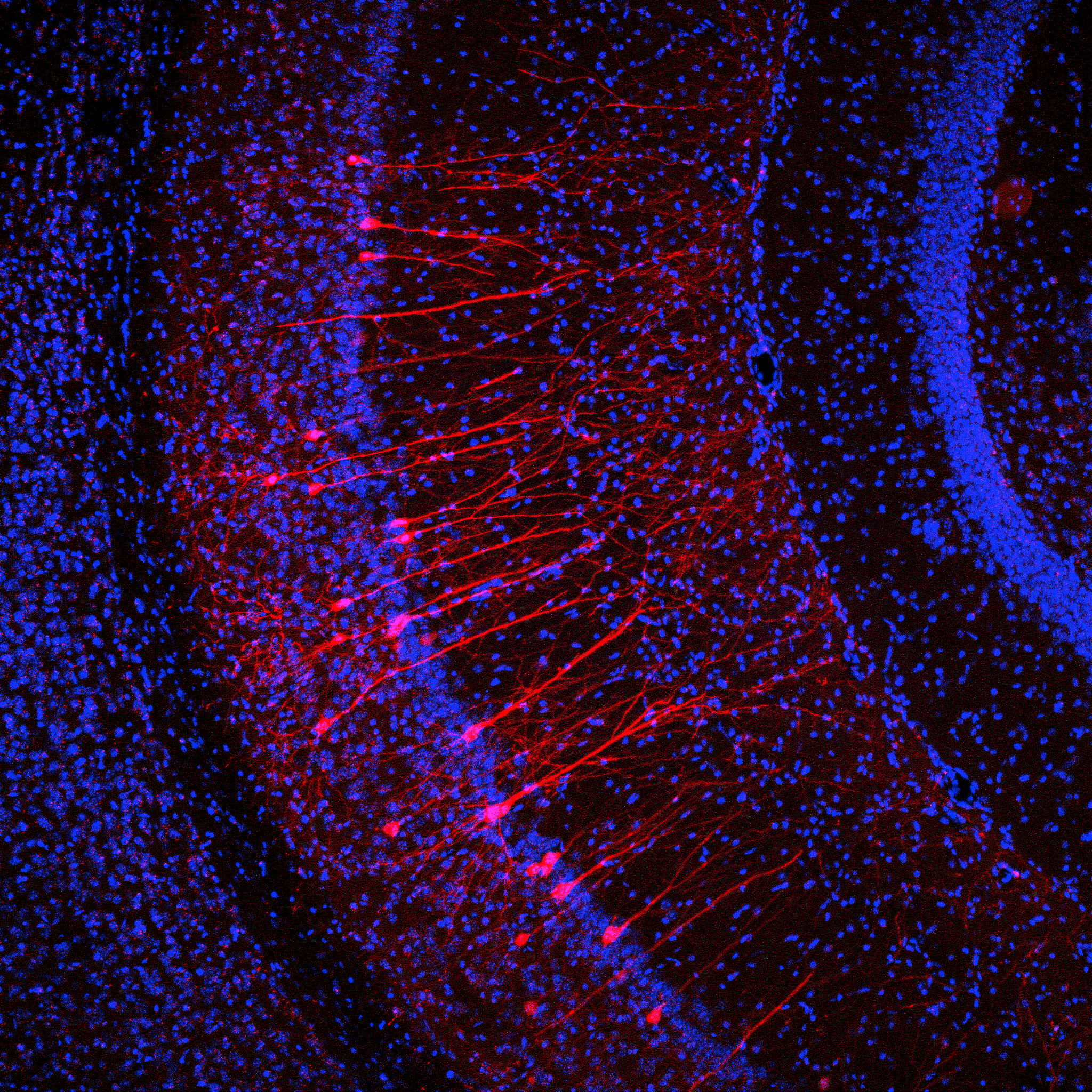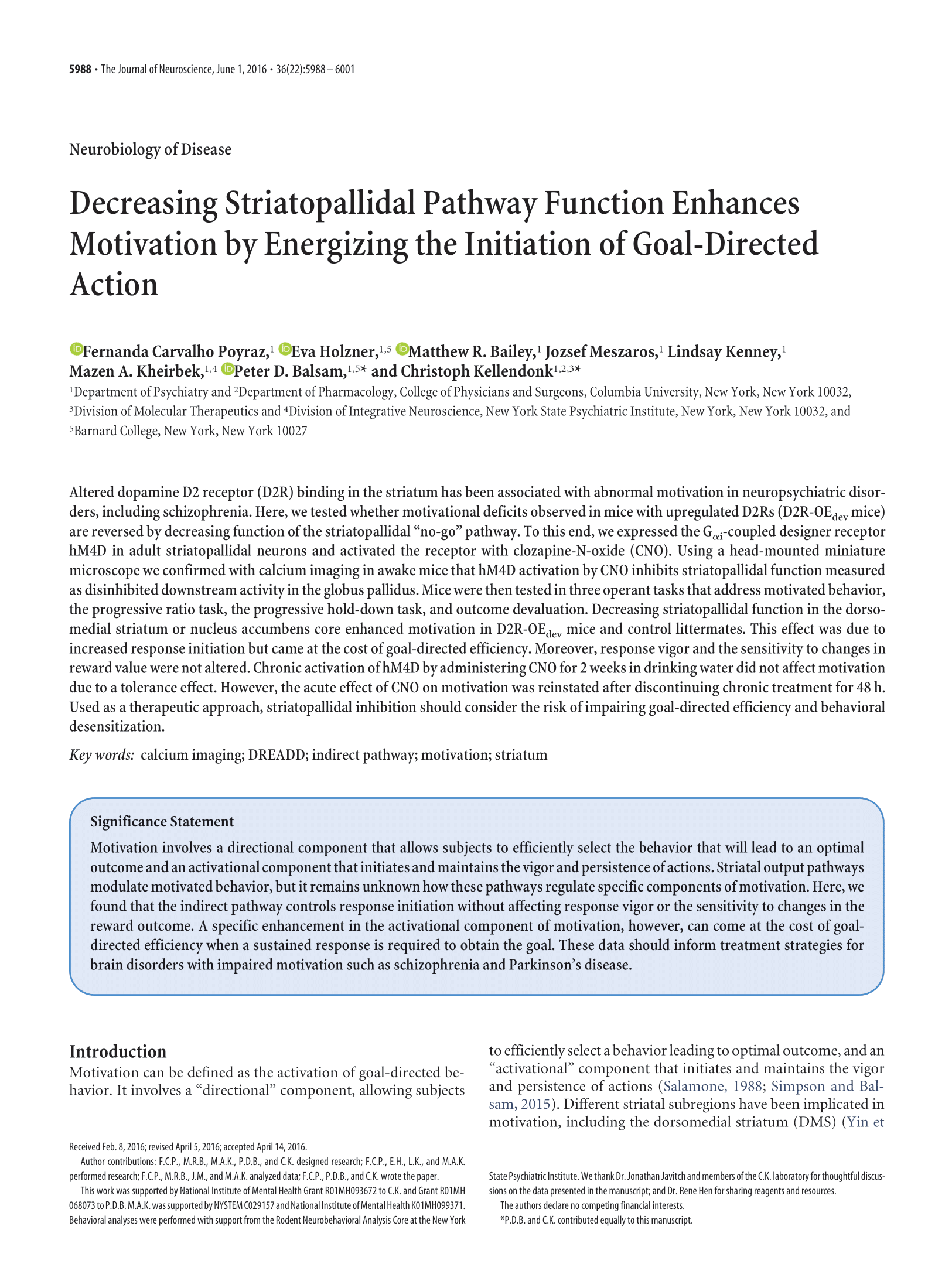
Publications

Distinct contribution of adult-born hippocampal granule cells to context encoding
Danielson NB, Kaifosh P, Zaremba JD, Lovett-Barron M, Tsai J, Denny CA, Balough EM, Goldberg AR, Drew DJ, Hen R, Losonczy A, Kheirbek MA (2016)
Neuron
Adult-born granule cells (abGCs) have been implicated in cognition and mood; however, it remains unknown how these cells behave in vivo. Here, we have used two-photon calcium imaging to monitor the activity of young abGCs in awake behaving mice. We find that young adult-born neurons fire at a higher rate in vivo but paradoxically exhibit less spatial tuning than their mature counterparts. When presented with different contexts, mature granule cells underwent robust remapping of their spatial representations, and the few spatially tuned adult-born cells remapped to a similar degree. We next used optogenetic silencing to confirm the direct involvement of abGCs in context encoding and discrimination, consistent with their proposed role in pattern separation. These results provide the first in vivo characterization of abGCs and reveal their participation in the encoding of novel information.
Preview by Ramsaran and Frankland (pdf)

Decreasing striatopallidal pathway function enhances motivation by energizing the initiation of goal-directed action
Carvalho Poyraz F, Holzner E, Bailey MR, Meszaros J, Kenney L, Kheirbek MA, Balsam PD, Kellendonk C (2016)
Journal of Neuroscience
Altered dopamine D2 receptor (D2R) binding in the striatum has been associated with abnormal motivation in neuropsychiatric disorders, including schizophrenia. Here, we tested whether motivational deficits observed in mice with upregulated D2Rs (D2R-OEdev mice) are reversed by decreasing function of the striatopallidal “no-go” pathway. To this end, we expressed the G!i -coupled designer receptor hM4D in adult striatopallidal neurons and activated the receptor with clozapine-N-oxide (CNO). Using a head-mounted miniature microscope we confirmed with calcium imaging in awake mice that hM4D activation by CNO inhibits striatopallidal function measured as disinhibited downstream activity in the globus pallidus. Mice were then tested in three operant tasks that address motivated behavior, the progressive ratio task, the progressive hold-down task, and outcome devaluation. Decreasing striatopallidal function in the dorsomedial striatum or nucleus accumbens core enhanced motivation in D2R-OEdev mice and control littermates. This effect was due to increased response initiation but came at the cost of goal-directed efficiency. Moreover, response vigor and the sensitivity to changes in reward value were not altered. Chronic activation of hM4D by administering CNO for 2 weeks in drinking water did not affect motivation due to a tolerance effect. However, the acute effect of CNO on motivation was reinstated after discontinuing chronic treatment for 48 h. Used as a therapeutic approach, striatopallidal inhibition should consider the risk of impairing goal-directed efficiency and behavioral desensitization.

GluN2B-containing NMDA receptors on adult-born granule cells contribute to the antidepressant action of fluoxetine
Tannenholz L, Hen R, Kheirbek MA (2016)
Frontiers in Neuroscience
Ablation of adult neurogenesis in mice has revealed that young adult-born granule cells (abGCs) are required for some of the behavioral responses to antidepressants (ADs), yet the mechanism by which abGCs contribute to AD action remains unknown. During their maturation process, these immature neurons exhibit unique properties that could underlie their ability to influence behavioral output. In particular, abGCs in the DG exhibit a period of heightened plasticity 4–6 weeks after birth that is mediated by GluN2B-expressing NMDA receptors. The functional contribution of this critical window to AD responsiveness is unclear. Here, we determined the behavioral and neurogenic responses to the AD fluoxetine (FLX) in mice lacking GluN2B-containing NMDA receptors in abGCs. We found that these mice exhibited an attenuated response to FLX in a neurogenesis-dependent behavioral assay of FLX action, while neurogenesis-independent behaviors were unaffected by GluN2B deletion. In addition, deletion of GluN2B attenuated FLX-induced increases in dendritic complexity of abGCs suggesting that the blunted behavioral efficacy of FLX may be caused by impaired differentiation of young abGCs.
